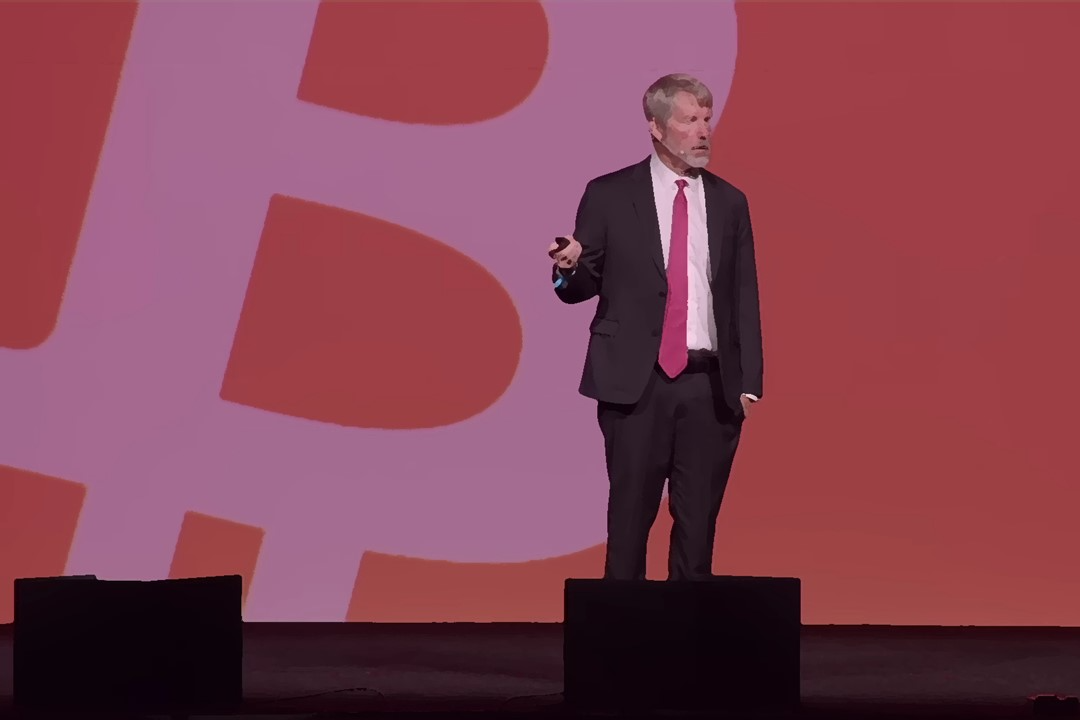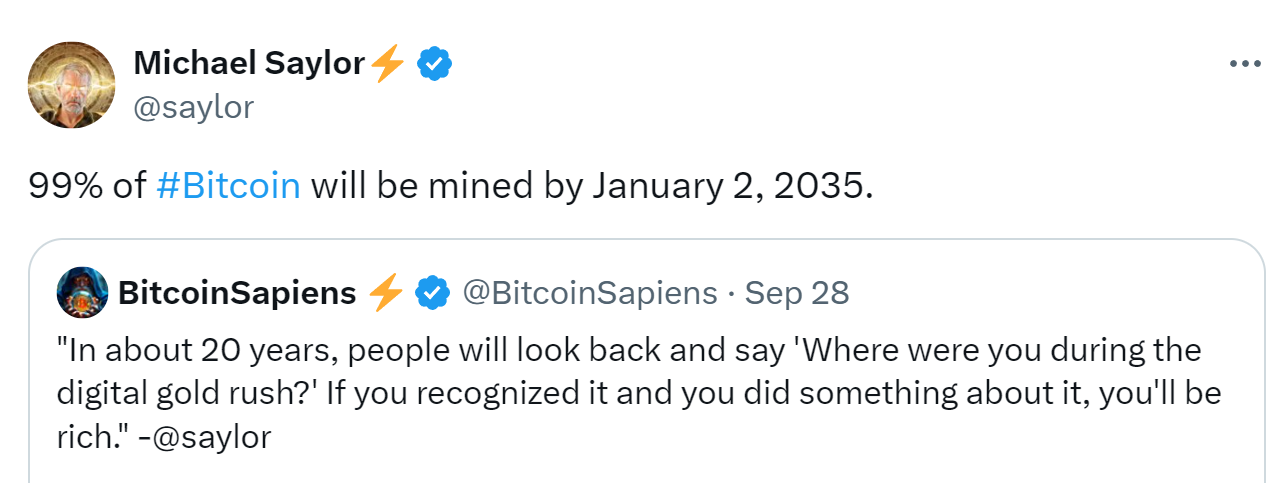2024-09-30



Michael Saylor⚡️ on X: "99% of #Bitcoin will be mined by January 2, 2035."
Michael Saylor, the co-founder and chairman of MicroStrategy,
on September 28, 2024, made a bold prediction that has captured the attention
of the crypto community. He stated that 99% of Bitcoin will be mined by January
2, 2035. This prediction suggests an acceleration in Bitcoin mining activities
over the next decade, which would see nearly 5% more of Bitcoin’s maximum
supply being mined.
Currently, about 94.10% of Bitcoin’s total supply has been
mined. If Saylor’s prediction holds true, it would mean that the remaining 1%
of Bitcoin will become increasingly scarce, potentially driving up its price as
demand outstrips supply. This could significantly impact the economics of
Bitcoin mining, with miners having to adjust to an environment where the
rewards for mining new blocks are significantly decreased.
What is Bitcoin halving?
Bitcoin halving events are an integral part of Bitcoin's
design, programmed to occur every four years (or every 210,000 blocks). The
purpose of halving is to reduce the rate at which new bitcoins are created,
ultimately capping the total supply of Bitcoin at 21 million.
Here's a summary of how the halving process works and the
timeline until the last bitcoin is mined.
Bitcoin Halving Overview
Initial Block Reward: When Bitcoin was launched in 2009, miners received 50 BTC
per block.
Halving Schedule: Every 210,000 blocks, or roughly every four years, the
block reward is halved.
Effect of Halving: The reduction in block rewards decreases the rate of new
bitcoin creation, making Bitcoin increasingly scarce over time.
Past and Future Halving Events
1. First Halving (2012)
o Date: November 28, 2012
o Block Reward Reduced from: 50 BTC to
25 BTC
o Total Supply Created by This Point: 10.5 million BTC
2. Second Halving (2016)
o Date: July 9, 2016
o Block Reward Reduced from: 25 BTC to
12.5 BTC
o Total Supply Created by This Point:
Approximately 15.75 million BTC
3. Third Halving (2020)
o Date: May 11, 2020
o Block Reward Reduced from: 12.5 BTC
to 6.25 BTC
o Total Supply Created by This Point:
Approximately 18.375 million BTC
4. Fourth Halving (2024)
§ Estimated Date: Around April 2024
§ Block Reward Reduced from: 6.25 BTC
to 3.125 BTC
§ Total Supply Created by This Point:
Approximately 19.6875 million BTC
5. Fifth Halving (2028)
§ Estimated Date: Around 2028
§ Block Reward Reduced from: 3.125 BTC
to 1.5625 BTC
6. Sixth Halving (2032)
§ Estimated Date: Around 2032
§ Block Reward Reduced from: 1.5625 BTC to 0.78125 BTC
7. Seven Halving (2036)
By the 7th halving, a significant portion of the total 21
million bitcoins will have already been mined. After the 7th halving,
approximately 99.999% of all bitcoins will have been mined. This means
that by 2036, the total supply will be 20.999 million BTC.
Further Halvings: The halving will continue approximately every four years,
progressively reducing the reward per block until it becomes negligible.
Last Bitcoin Mined: The Year 2140
Implications of Halving
1. Reduced Inflation: Each halving reduces the rate of
new supply, which can contribute to increased scarcity and potential value
appreciation, assuming demand remains constant or increases.
2. Miner Revenue: Miners' revenue from block rewards
diminishes, meaning they increasingly rely on transaction fees for
compensation, especially after the block rewards become very small.
3. Network Security: As halvings occur, miner incentives
change, potentially affecting the security of the Bitcoin network. After the
final bitcoin is mined, the system will rely entirely on transaction fees.
Conclusion
The Bitcoin halving process will continue roughly every four
years until around the year 2140, when the last bitcoin will be
mined, reaching the total supply limit of 21 million. After this, the
Bitcoin network will rely on transaction fees to incentivize miners, while the
total supply will remain fixed. This mechanism ensures a predictable and
decreasing supply of new bitcoins, which contributes to its scarcity and its
potential value as a deflationary digital asset.